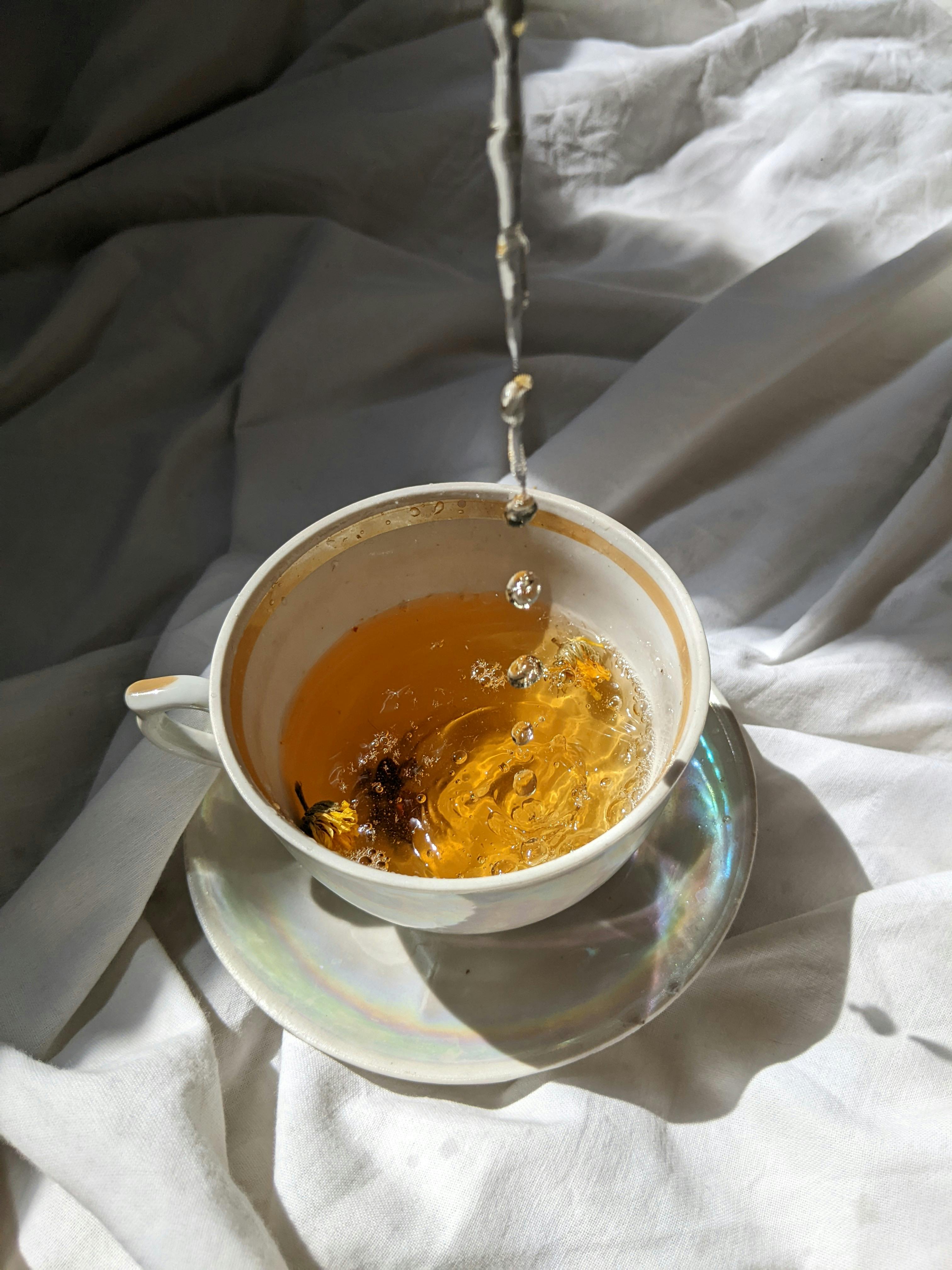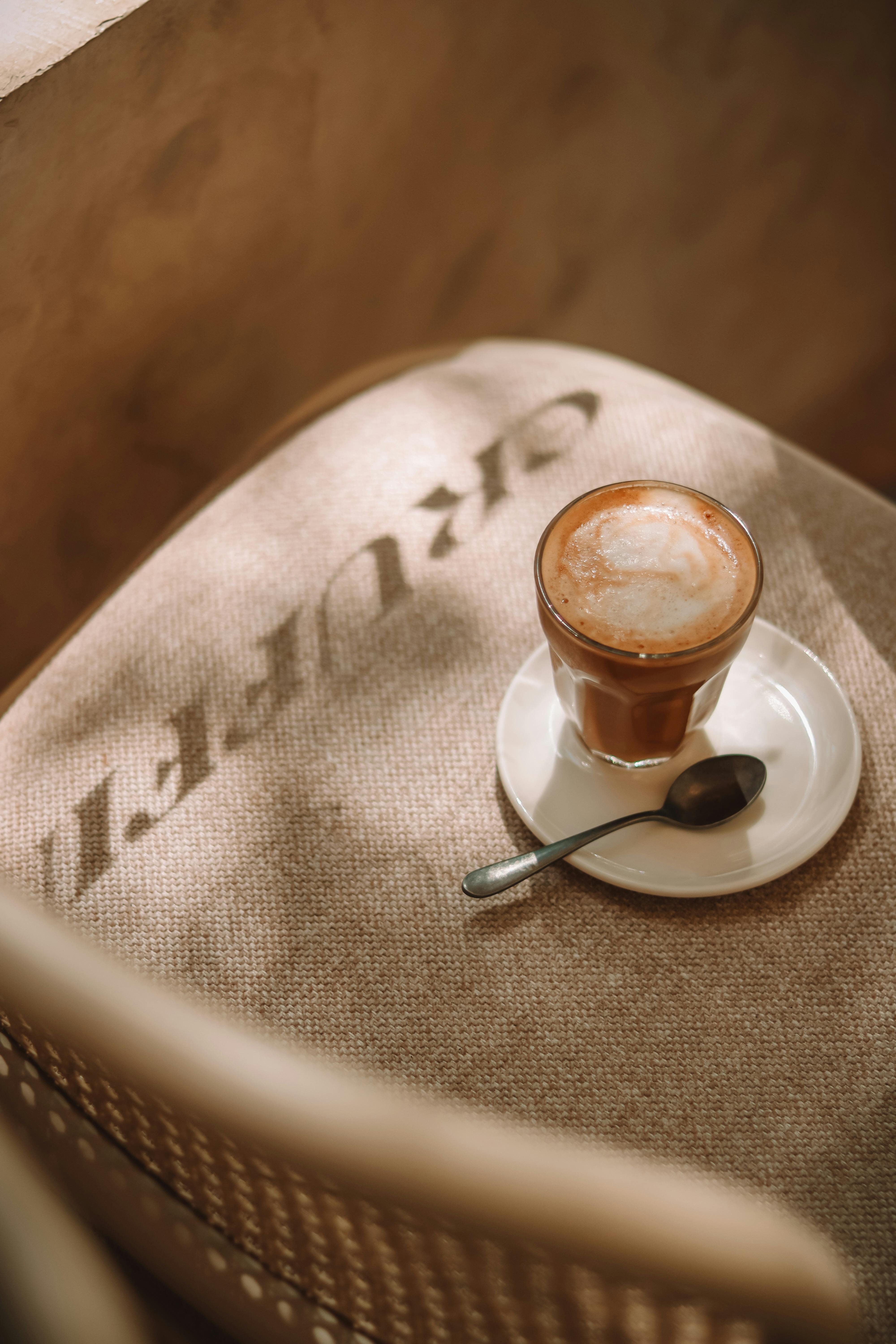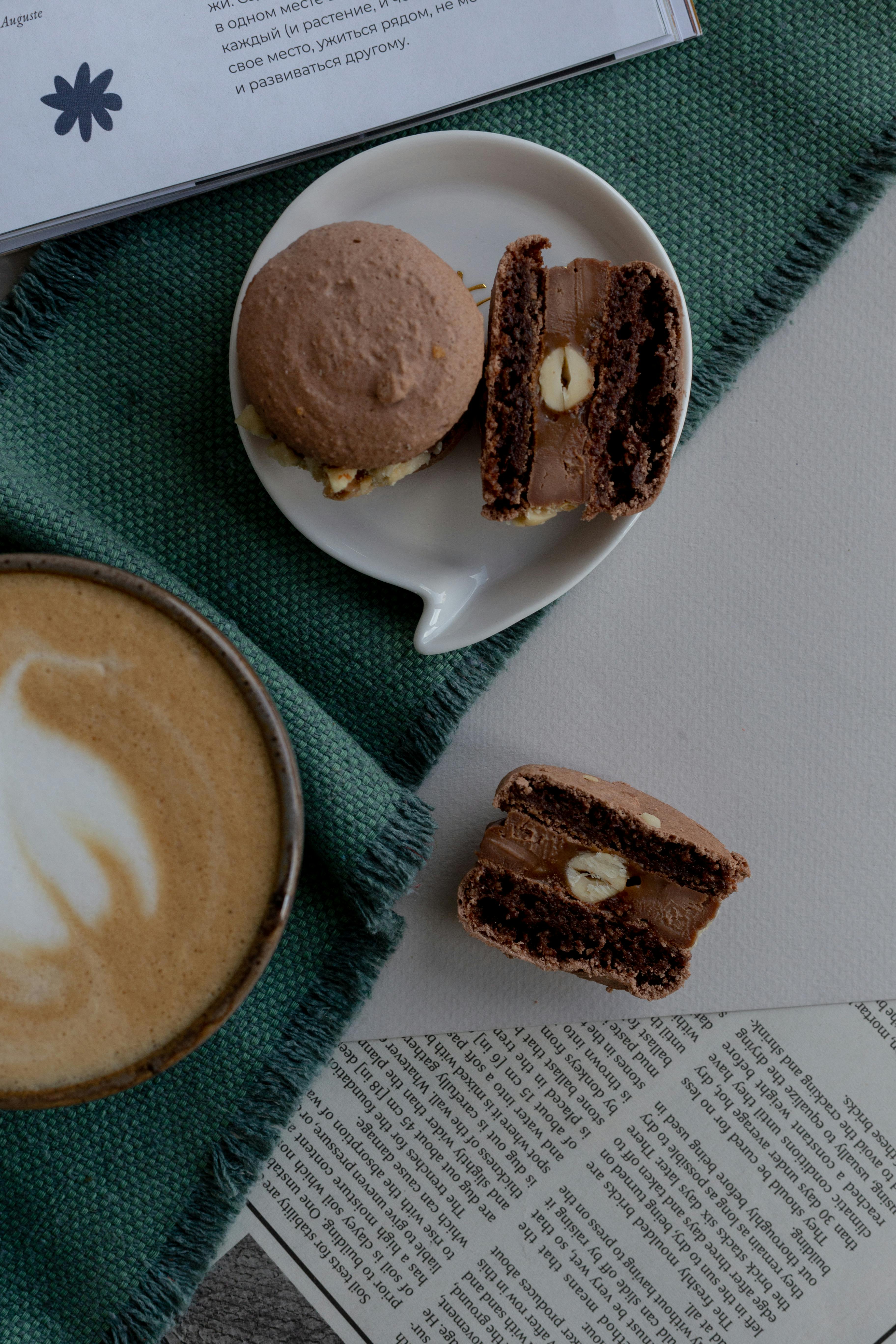So you’ve found yourself in a dilemma: you have a tea infuser but you’re in the mood for a strong cup of coffee. Can you use a tea infuser for coffee? Well, the answer is not as straightforward as you might think. While tea infusers are designed specifically for steeping tea leaves, some creative coffee enthusiasts have experimented with using them to brew their morning joe. So, let’s explore whether a tea infuser can truly mimic the brewing experience of a traditional coffee maker or if you’ll be left with a disappointing cup of weak and watery coffee.

1. Understanding Tea Infusers
Tea infusers are handy tools used to steep loose tea leaves in hot water, allowing the flavors and aromas to be extracted and enjoyed. They come in various designs and materials, making it easier for tea enthusiasts to find one that suits their preferences. Understanding the different types of tea infusers and how they work can greatly enhance your tea-drinking experience.
1.1 Different Types of Tea Infusers
Tea infusers come in a range of designs, each offering its own unique advantages. One commonly used type of tea infuser is the mesh ball infuser. This infuser consists of a small metal mesh ball with a chain attached, making it easy to remove from a cup or teapot once steeping is complete. Another popular option is the tea strainer, which is a perforated metal or mesh device placed over the rim of a cup, ensuring that no tea leaves escape into the drink. Silicone tea infusers are also gaining popularity due to their flexibility and ease of cleaning.
1.2 How Tea Infusers Work
Tea infusers generally work by allowing water to flow through the leaves while keeping them contained within the infuser. By immersing the infuser in hot water, the tea leaves release their flavors and pigments, resulting in a delicious and aromatic brew. The design of the infuser determines how much water and tea leaves can interact, impacting the strength and taste of the brewed tea. It is important to choose a tea infuser that allows for appropriate water circulation while keeping the leaves contained. Now that we have a better understanding of tea infusers, let’s delve into whether they can be used for brewing coffee.
2. Coffee Brewing Methods
Coffee brewing methods play a crucial role in determining the flavor and quality of the final cup. There are various techniques used to extract the desired flavors and characteristics from coffee grounds, each offering its own unique brewing experience.
2.1 Drip Brewing
Drip brewing, also known as filter brewing, is one of the most commonly used methods for making coffee. It involves pouring hot water over coffee grounds held in a paper or metal filter, allowing the water to pass through and extract the flavors. This method is widely favored for its convenience and ability to produce a clean and well-balanced cup of coffee.
2.2 French Press
The French press, also known as a coffee plunger or press pot, offers a more hands-on approach to brewing coffee. It involves steeping coarsely ground coffee in hot water for a few minutes before pressing a mesh plunger down to separate the coffee grounds from the liquid. This method is known for its ability to produce a rich and robust cup of coffee with a fuller body.
2.3 Pour Over
Pour over brewing is a slower and more precise method that involves pouring hot water over a bed of coffee grounds placed in a cone-shaped device with a paper filter. The water is poured in a controlled and circular motion, allowing for even extraction and highlighting the unique flavors of the coffee. This method requires patience and attention to detail but can result in a clean and flavorful cup of coffee.
2.4 Aeropress
The Aeropress is a relatively new brewing method that has gained popularity due to its versatility and ability to produce a range of coffee styles. It involves steeping finely ground coffee in water for a short period before using air pressure to force the liquid through a filter and into a cup. This method is known for its quick brewing time, ease of use, and the ability to experiment with different variables to achieve desired flavors.
2.5 Espresso Machines
Espresso machines are a staple in many coffee shops and offer a unique brewing method that produces highly concentrated coffee known as espresso. These machines force hot water through finely ground coffee under high pressure, resulting in a rich and intense flavor profile. Espresso machines are known for their ability to create a variety of coffee-based beverages such as lattes, cappuccinos, and macchiatos.
3. Using a Tea Infuser for Coffee
Now that we have explored various coffee brewing methods, you may be wondering if a tea infuser can be used as an alternative for brewing coffee. While tea infusers are primarily designed for steeping tea leaves, they can indeed be used for brewing coffee with a few adaptations.
3.1 Advantages of Using a Tea Infuser for Coffee
Using a tea infuser for brewing coffee offers several advantages. Firstly, tea infusers are often more affordable and accessible than specialized coffee brewing equipment. Additionally, the small size and portable nature of tea infusers make them convenient for brewing coffee on the go or in small spaces. Tea infusers also allow for easy experimentation with different coffee beans and flavors, making them a versatile option for coffee enthusiasts.
3.2 Steps to Use a Tea Infuser for Coffee
To use a tea infuser for brewing coffee, follow these simple steps:
-
Choose a tea infuser that can accommodate coffee grounds and ensure it is thoroughly cleaned to avoid any residual flavors.
-
Select the desired coffee grind size. For tea infusers, it is recommended to use a coarser grind to prevent fine particles from slipping through the infuser’s mesh or holes.
-
Measure the appropriate amount of coffee grounds based on your preferred coffee-to-water ratio. It is important to consider factors such as the strength and intensity of flavor you desire.
-
Place the coffee grounds into the tea infuser, ensuring that they are evenly distributed and not packed too tightly.
-
Heat water to the appropriate temperature for your chosen coffee brewing method.
-
Pour the hot water over the tea infuser containing the coffee grounds, ensuring that the grounds are fully immersed in the water.
-
Allow the coffee to steep for the desired brew time, typically between 3-5 minutes. Adjust the steeping time based on your personal taste preferences.
-
Once the desired strength is achieved, carefully remove the tea infuser from the water, ensuring that any excess liquid has drained from the infuser.
-
Enjoy your freshly brewed cup of coffee and adjust your brewing technique as needed for future brews.
Using a tea infuser for coffee brewing can be a fun and alternative way to enjoy your favorite caffeinated beverage. However, there are some factors to consider when using a tea infuser for coffee.
4. Factors to Consider
When using a tea infuser for coffee brewing, it is important to take into account several factors that can greatly impact the taste and quality of the final cup. These factors include coffee grind size, brew time, water temperature, and the coffee-to-water ratio.
4.1 Coffee Grind Size
The grind size of coffee grounds plays a crucial role in determining the extraction rate and overall flavor profile. When using a tea infuser for coffee, it is generally recommended to use a coarser grind size to prevent fine particles from slipping through the infuser and affecting the texture of the brewed coffee.
4.2 Brew Time
The brew time or steeping time for coffee is essential in achieving the desired flavor and strength. A longer brew time can result in a stronger and more robust flavor profile, while a shorter brew time may produce a milder cup. Experimenting with different brew times will allow you to find the perfect balance for your taste preferences when using a tea infuser for coffee.
4.3 Water Temperature
Water temperature significantly impacts the extraction process and the flavors that are extracted from the coffee grounds. Typically, water temperature between 195°F and 205°F (90°C and 96°C) is recommended for brewing coffee. However, it is crucial to adjust the temperature based on personal preference and the specific coffee beans being used.
4.4 Coffee-to-Water Ratio
The coffee-to-water ratio refers to the amount of coffee grounds used in relation to the amount of water. This ratio affects the strength and intensity of flavor in the brewed coffee. Generally, a ratio of 1:15 (1 part coffee to 15 parts water) is commonly used as a starting point. However, adjusting the ratio based on personal taste preferences will help achieve the desired taste and strength.
Considering and experimenting with these factors will allow you to fine-tune your coffee brewing technique when using a tea infuser.

5. Potential Drawbacks of Using a Tea Infuser for Coffee
While using a tea infuser for coffee brewing can be a convenient and cost-effective method, there are some potential drawbacks to consider. Here are a few common challenges that may arise when using a tea infuser for coffee.
5.1 Reduced Extraction Efficiency
Tea infusers are designed with larger holes or mesh sizes compared to coffee-specific brewing equipment. This can result in reduced extraction efficiency as some coffee grounds may not be fully immersed or properly extracted. As a result, the flavor and strength of the brewed coffee may not reach its full potential.
5.2 Limited Capacity
Tea infusers are generally smaller in size compared to coffee-specific equipment, limiting the amount of coffee grounds that can be brewed at once. This can be a disadvantage if you need to brew multiple cups or larger quantities of coffee.
5.3 Coffee Grounds Getting Through
Due to the larger size of the holes or mesh in a tea infuser, there is a higher chance of coffee grounds escaping into the final cup of coffee. This can result in a gritty texture and may require additional steps such as using a secondary filter to remove the grounds.
5.4 Greater Control Challenges
Compared to coffee-specific brewing methods, using a tea infuser for coffee can present challenges in terms of controlling variables such as water temperature and brew time. While adjustments can be made through trial and error, achieving consistency may prove to be more difficult.
It is important to keep these potential drawbacks in mind and assess whether using a tea infuser for coffee is the most suitable brewing method for your preferences and requirements.
6. Alternative Methods for Brewing Coffee
If using a tea infuser for coffee brewing presents too many challenges or limitations, there are several alternative methods available to achieve a flavorful cup of coffee. These methods offer a wider range of control and efficiency when brewing coffee, allowing for a more consistent and satisfying experience.
6.1 Using a Regular Coffee Filter
Using a regular coffee filter, either disposable or reusable, is a simple and effective alternative for brewing coffee. By placing the desired amount of coffee grounds in the filter and pouring hot water over it, you can achieve a well-extracted and clean cup of coffee. This method ensures minimal grounds in the final cup and offers greater control over variables such as water flow and extraction.
6.2 Single-Serve Brewing Systems
Single-serve brewing systems, such as pod-based machines or single-cup pour-over devices, provide convenience and consistency in brewing coffee. These systems allow for precise control over water temperature, brew time, and coffee-to-water ratio, resulting in a consistently flavorful cup of coffee with minimal effort.
6.3 Paper Cone Filters
Paper cone filters, popularized by pour-over brewing, offer a versatile and affordable option for brewing coffee. By placing the cone filter over your cup or carafe, adding coffee grounds, and pouring hot water in a controlled manner, you can achieve a clean and flavorful cup of coffee. This method allows for precise control over factors such as water flow and extraction.
6.4 Other DIY Coffee Filters
If you are open to experiments and DIY approaches, there are various unconventional methods for brewing coffee that can yield unique and satisfying results. Some examples include using a French press without the plunger, using a cloth filter or a sock, or even trying the cowboy coffee method, which involves boiling coffee grounds directly in water. These methods offer a sense of creativity and flexibility in tailoring your brewing process to match your preferences.

7. Popular Tea Infusers on the Market
When it comes to choosing a tea infuser for coffee brewing, the market offers a wide range of options to suit different needs and preferences. Here are a few popular tea infusers worth considering:
7.1 Mesh Ball Infusers
Mesh ball infusers are a classic choice that offers simplicity and convenience. Made of metal, these infusers consist of a mesh ball with a chain attached for easy retrieval. They are available in various sizes and can accommodate different quantities of coffee grounds.
7.2 Tea Strainers
Tea strainers are another popular choice and are often used for loose-leaf tea. They are typically made of metal or mesh and come in different sizes and shapes. Tea strainers with fine mesh provide optimal filtration and prevent coffee grounds from escaping into the final cup.
7.3 Silicone Tea Infusers
Silicone tea infusers have gained popularity due to their flexibility, versatility, and ease of cleaning. They often come in fun and unique shapes, making them visually appealing. Silicone infusers are easy to use and offer practicality for coffee brewing on the go.
Exploring different tea infuser options can help you find one that suits your brewing needs and personal style.
8. Cleaning and Maintenance
Proper cleaning and maintenance of tea infusers, especially when used for coffee brewing, are essential to prevent flavor transfer and ensure optimal performance. Here are a couple of steps to keep in mind:
8.1 Cleaning a Tea Infuser after Coffee Use
After using a tea infuser for coffee brewing, it is important to thoroughly clean the infuser to avoid any lingering coffee flavors in future use. Start by emptying and discarding the used coffee grounds. Rinse the infuser under warm water to remove any residue, and then wash it with mild soap or a cleaning agent suitable for food-grade materials. Ensure that all coffee remnants are removed, paying attention to any clogged holes or mesh. Lastly, make sure the infuser is thoroughly dried before storing it to prevent any potential mold or residue buildup.
8.2 Avoiding Flavor Transfer
To avoid flavor transfer between different types of tea or coffee, it is recommended to dedicate specific tea infusers for each purpose. Using a separate tea infuser solely for coffee brewing can help maintain the integrity of the flavors and prevent any cross-contamination.
By following proper cleaning practices and appropriately managing your tea infuser, you can ensure optimal hygiene and enjoy a cup of coffee without any unwanted flavors.
9. Final Thoughts
Using a tea infuser for coffee brewing can be an exciting and alternative method for coffee enthusiasts to explore. While it offers convenience, cost-effectiveness, and versatility, it also presents some limitations and challenges. By assessing your personal preferences, experimenting with variables, and considering alternative brewing methods, you can find the perfect balance between convenience and the desired coffee flavor.
9.1 Exploring Personal Preferences
Every coffee enthusiast has unique taste preferences when it comes to their brew. Some may prefer a strong and bold cup of coffee, while others may prefer a milder and more delicate flavor. By exploring personal preferences and adjusting variables such as grind size, brew time, and water temperature, you can find the brewing method that best suits your taste buds.
9.2 Experimenting with Different Methods
Coffee brewing is a journey of discovery, and experimenting with different brewing methods can unveil new flavors and characteristics. While using a tea infuser for coffee brewing offers a convenient option, do not hesitate to explore other methods such as drip brewing, French press, or pour-over to further enhance your coffee-drinking experience.
10. Conclusion
In conclusion, while tea infusers are primarily designed for steeping tea leaves, they can certainly be used as an alternative method for brewing coffee. By understanding the different types of tea infusers, how they work, and the factors to consider, you can adapt the coffee brewing process to achieve a flavorful cup. However, it is important to be aware of the potential drawbacks, such as reduced extraction efficiency and limited capacity, that using a tea infuser for coffee brewing may present. If the challenges outweigh the benefits, there are various alternative brewing methods available that offer greater control and consistency. Ultimately, exploring personal preferences, experimenting with different brewing methods, and maintaining proper cleaning and maintenance practices will help you find the perfect cup of coffee that suits your taste and preferences. Happy brewing!
